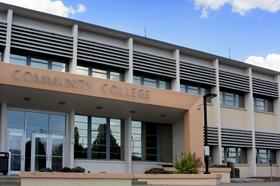Addiction counselors work with individuals who have issues with drugs, alcohol, gambling or eating. These professionals operate in a variety of settings, providing both individual and group counseling services that offer the support patients need to move on from their additions. If you have a passion for helping people and are willing to put in the time and training to obtain certification in your field, addiction counseling might be the right job for you.
Many students begin their study in addiction counseling at their local community college, and then they move to a professional position or a four-year university where they can continue to advance in their field. While many states require individuals to have a master's degree to become licensed as an addiction counselor, others use their community college training to get their foot in the door and advance with on-the-job experience.
About Addiction Counseling
According to the U.S. Bureau of Labor Statistics, job growth for addiction counselors over the next decade is expected to be favorable. The job may be performed in a variety of settings, from private offices to clinics and hospitals. Counseling sessions are frequently in group format, with many patients coming to weekly sessions that help them overcome their addictions over a period of time. These counseling sessions provide support and information to help people modify behaviors and address issues that led to the addictions in the first place.
Most states require addiction counselors to obtain a license





















